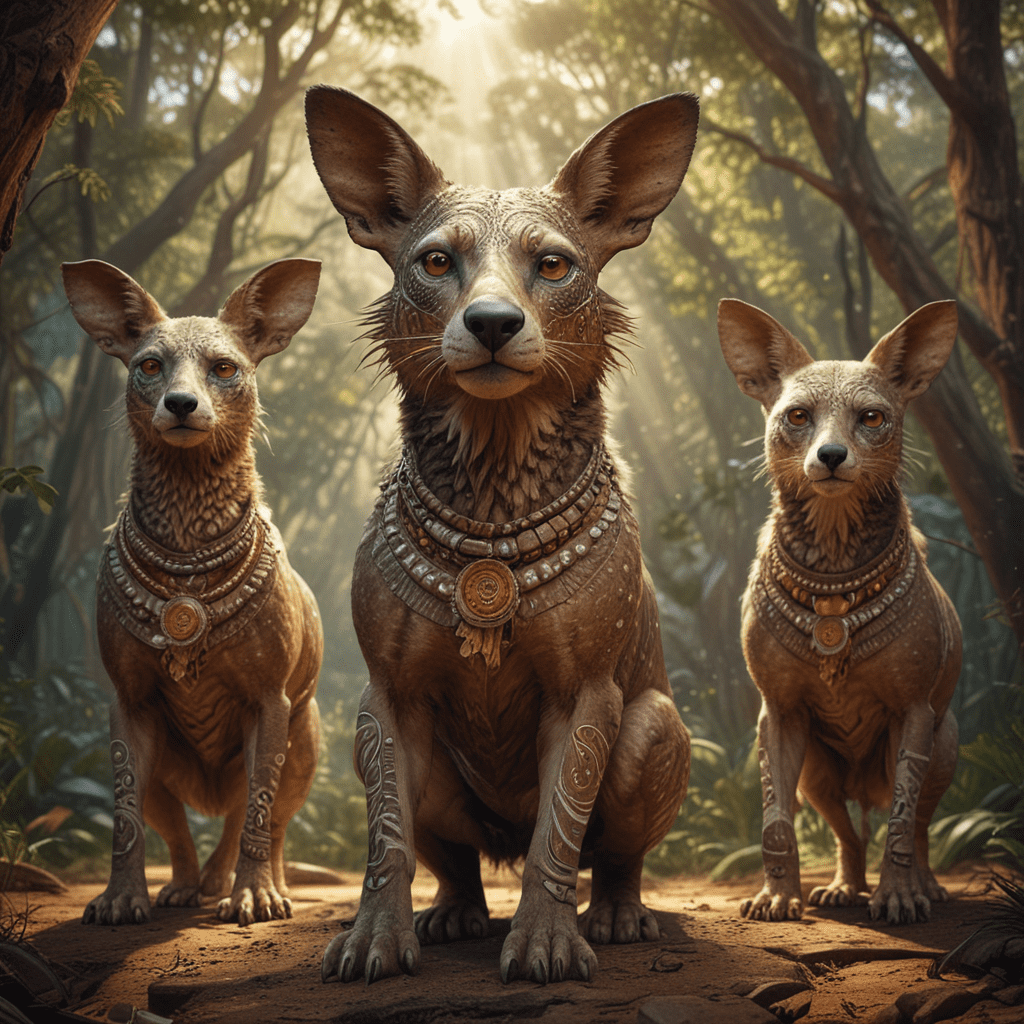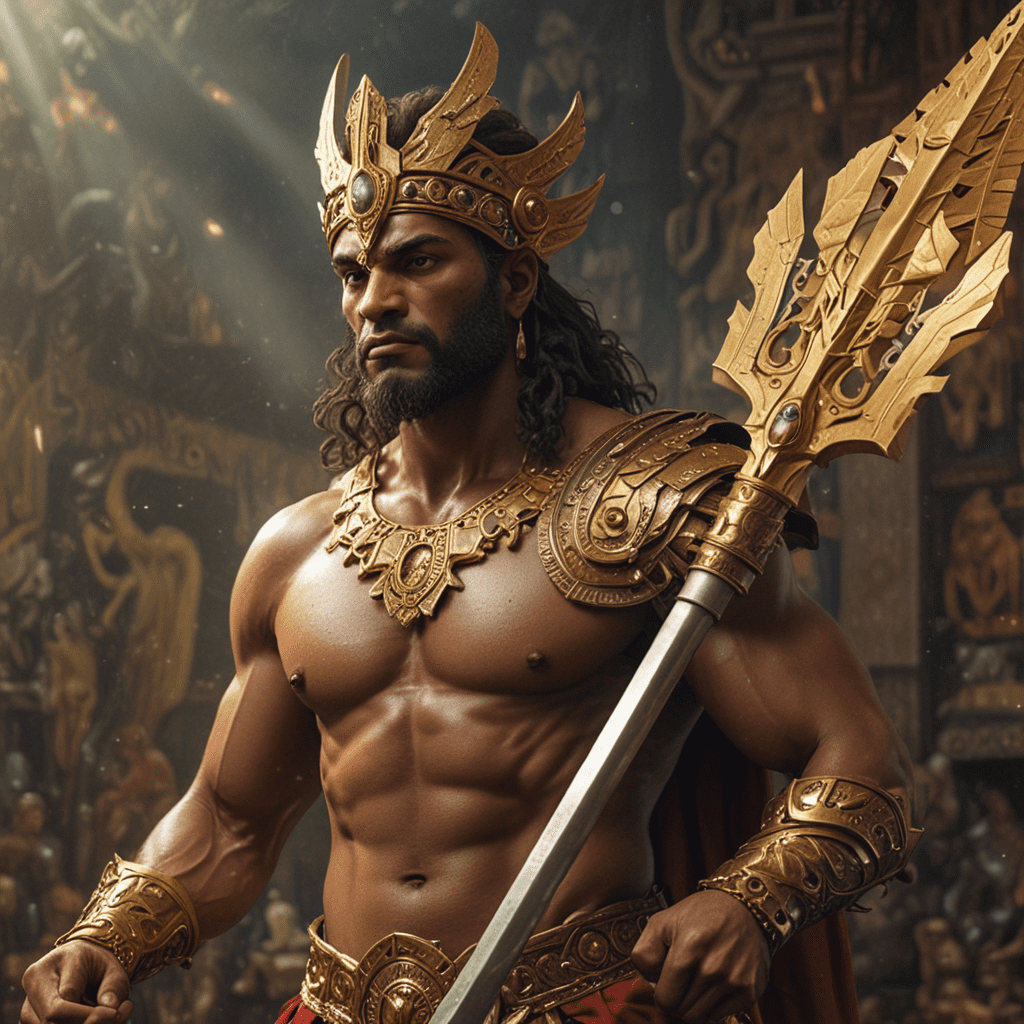The Most Iconic Myths of Ancient Deities and Their Adventures
Introduction to Ancient Deities and Myths
Ancient deities are supernatural beings worshipped in various cultures throughout history, embodying the values, fears, and aspirations of the societies that revered them. These gods and goddesses often served as personifications of natural forces, human traits, and societal ideals. Myths surrounding these deities play a pivotal role in understanding ancient cultures, as they provide insight into the beliefs, customs, and moral lessons of the time.
This article will delve into some of the most iconic tales of ancient deities, exploring their adventures and the profound themes that resonate within these stories. From the thunderous exploits of Zeus to the fierce battles of Kali, we will uncover the richness and complexity of these ancient myths.
The Pantheon of Gods: An Overview
A pantheon is a collective term for a set of deities worshipped by a particular culture or religion. Major pantheons include:
- Greek Pantheon: Home to gods like Zeus, Athena, and Poseidon.
- Roman Pantheon: Adapted many Greek gods, such as Jupiter for Zeus.
- Norse Pantheon: Features gods like Odin, Thor, and Loki.
- Egyptian Pantheon: Includes deities like Ra, Anubis, and Isis.
Each of these deities played a crucial role in their respective mythologies, often serving as protectors, creators, or destroyers. Their stories not only entertained but also provided moral and ethical guidance, influencing societal norms and behaviors.
Zeus and His Thunderous Adventures
Zeus, the king of the Greek gods, is one of the most powerful figures in mythology. Ruler of Mount Olympus, he is often depicted wielding a thunderbolt, symbolizing his authority and control over the sky and weather.
Among his key myths is the Titanomachy, the epic battle between the Olympian gods and the Titans. This conflict highlights themes of power, betrayal, and justice, as Zeus leads his brothers and sisters to victory, establishing a new order among the gods.
Another significant tale is the birth of Athena, who sprang fully grown and armored from Zeus’s forehead. This myth underscores Zeus’s role as a creator and protector, as Athena becomes a symbol of wisdom and warfare.
Ra: The Solar Deity of Ancient Egypt
Ra, revered as the sun god, holds a central position in Egyptian mythology. He symbolizes light, warmth, and growth, embodying the cycle of life and death. Each day, Ra is believed to journey through the sky in his solar barque, bringing light to the world.
One of the major myths surrounding Ra is his daily journey through the underworld, where he faces various challenges, including the serpent Apophis, which represents chaos and darkness. This myth symbolizes the struggle between order and chaos, highlighting the significance of rebirth and renewal in Egyptian belief systems.
Thor: The God of Thunder and Protector of Humanity
In Norse mythology, Thor is known as the god of thunder, lightning, and storms. He is characterized by his immense strength, bravery, and loyalty to humanity. Wielding his mighty hammer, Mjölnir, Thor protects the gods and mortals alike from the forces of chaos.
Two iconic adventures of Thor include:
- The Theft of Mjölnir: In this tale, Thor’s hammer is stolen by the giant Thrym, leading to a comedic and daring quest to retrieve it, showcasing Thor’s resourcefulness and valor.
- The Battle with the Midgard Serpent: Thor’s confrontation with Jörmungandr, the serpent that encircles the Earth, symbolizes the struggle between good and evil, culminating in their fateful clash during Ragnarök.
These stories explore themes of bravery, loyalty, and sacrifice, as Thor exemplifies the ideal warrior and protector.
Kali: The Fierce Goddess of Destruction and Transformation
Kali, a prominent deity in Hindu mythology, embodies the duality of creation and destruction. Often depicted with a fierce appearance, she represents the transformative power of time and the inevitability of change.
One of her key myths is the battle against the buffalo demon Mahishasura. This story illustrates Kali’s role as a fierce protector of dharma (cosmic order) and her willingness to confront malevolent forces. Through her triumph, Kali symbolizes the victory of good over evil and the necessity of destruction for renewal.
Hercules: The Heroic Deeds of a Demi-God
Hercules, known for his incredible strength and heroic feats, is a demi-god in Greek mythology, born from the union of Zeus and the mortal Alcmene. His life is marked by a series of challenges known as the Twelve Labors, which were tasks assigned to him as penance.
The Twelve Labors include:
- Slaying the Nemean Lion
- Slaying the nine-headed Hydra
- Capturing the Golden Hind of Artemis
- Capturing the Erymanthian Boar
- Cleansing the Augean Stables
- Slaying the Stymphalian Birds
- Capturing the Cretan Bull
- Stealing the Mares of Diomedes
- Obtaining the Girdle of Hippolyta
- Obtaining the Cattle of Geryon
- Fetching the Apples of the Hesperides
- Capturing Cerberus, the three-headed dog
These labors not only demonstrate Hercules’s physical strength but also explore themes of redemption, perseverance, and the human spirit’s capacity to overcome adversity.
Athena: The Goddess of Wisdom and War
Athena, the goddess of wisdom, warfare, and crafts, is one of the most revered deities in Greek mythology. Born from Zeus’s forehead, she embodies the union of intelligence and strategy.
Key myths involving Athena include:
- The Contest with Poseidon: In this tale, Athena competes with Poseidon to become the patron deity of Athens, ultimately winning by offering the olive tree, a symbol of peace and prosperity.
- Her Role in the Trojan War: As a strategic advisor to the Greeks, Athena plays a crucial role in the conflict, showcasing her attributes of wisdom and tactical prowess.
Athena’s stories reflect themes of wisdom, strategy, and female empowerment, illustrating her as a guiding force for heroes and a protector of cities.
Anubis: The Guardian of the Afterlife
Anubis, the jackal-headed god in Egyptian mythology, is associated with mummification and the afterlife. As the guardian of the dead, Anubis plays a critical role in ensuring safe passage to the afterlife.
Key myths surrounding Anubis include:
- The process of mummification, where he oversees the embalming of the deceased to prepare them for the afterlife.
- The weighing of the heart, a ceremony where the heart of the deceased is weighed against the feather of Ma’at, determining their fate in the afterlife.
Anubis symbolizes protection, guidance, and the importance of honoring the dead, reflecting the cultural practices and beliefs of ancient Egyptian society.
Conclusion
The myths of ancient deities are a window into the values, fears, and aspirations of early civilizations. From the thunderous adventures of Zeus to the protective embrace of Anubis, each story offers timeless lessons about power, sacrifice, wisdom, and the human condition. By exploring these iconic tales, we not only celebrate the rich tapestry of mythology but also gain insight into the cultural heritage that has shaped our understanding of the world.
![]()


